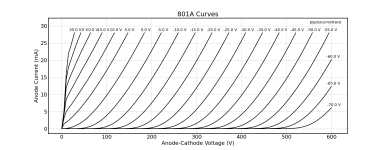See main thread linked in the first post:With sensitivity about 100 dB at 100 Vrms, why do you need 650 V peak-to-peak?
https://www.diyaudio.com/community/threads/open-source-dht-estat-headphone-amp-osdeha.407679/
Each hobby, if you use prospectively not supported product is risky.How long can the project work for me. And how much I should pay for its further maintenance.
Tubes are endangered products, nowadays only the "guitar industry" keeps it alive.
If you use such things, arrange for a replacement.
I use my 801 preamp for seven years daily, four-six hour/day.
I collected 10/10y/801/801a tubes for decades, I have few bunch from all of them.
I'm old, so it enough for few decades. 🙂
I've read it. All I can say is that your way of determining the peak voltage and peak current is quite arbitrary. When you get to the loudest point that you can tolerate, you believe it is the amplifier that is distorting. But it could be as well the headphone or your ears. Distortion aside, the ear can tolerate a lot of instantaneous noise. On my military service a long time ago, I used to be anti-tank gunner. A gun with a muzzle brake (which diverts part of blast wave towards crew) is probably one of the loudest things you can hear. I still have normal hearing.See main thread linked in the first post:
https://www.diyaudio.com/community/threads/open-source-dht-estat-headphone-amp-osdeha.407679/
Slew rate at full blast 20 kHz is irrelevant. There is no music remotely close to this. Most people don't hear beyond 15-16K.
The most important advantage of electrostatic phones is their ability to faithfully reproduce at extremely low SPL. This allows a listener to hear full dynamic range of the recording even at low volumes. The dynamic range is is the key, not peak capacity. Ignore OSHA SPL table, and you risk hearing damage.
You are going to have quite a lot of voltage and a substantial amount of current across the CCS, how do you plan to deal with the heat?Agree. Apart from your points, chokes like to pick up hum. Been there, done that. As described in the main thread (link in first post), the amp will use CCS/gyrator loads, not a real choke.
If you are going with a push-pull output stage, just use the primary of whatever push-pull transformer seems appropriate for the DHT you select, but ground the CT and run the output tube from a negative voltage supply. That will give you about 0V DC at all but your bias jack pins, which seems ideal.
I measured the curves at positive grid voltage, see attached figure. Once the grid voltage gets higher then +5 V, the curves start compressing. If the grid voltage is allowed to swing to +5 V with a 20 mA CCS, the bias voltage needed for a +/- 325 Vpk swing would work out to 440 V. This is just within the max. voltage allowed for the 10Y / VT-25, so these tubes would also work in this setup!What's wrong with A2?
Agreed, I can't be 100% sure about distortion of the headphone or my ears. However, I am sure the amplifier was clipping, because I saw it on the scope.All I can say is that your way of determining the peak voltage and peak current is quite arbitrary. When you get to the loudest point that you can tolerate, you believe it is the amplifier that is distorting. But it could be as well the headphone or your ears.
Each CCS will dissipate 500 V x 20 mA = 10 W or less. Not a big deal if a suitable heatsink is used.You are going to have quite a lot of voltage and a substantial amount of current across the CCS, how do you plan to deal with the heat?
There is no output transformer!If you are going with a push-pull output stage, just use the primary of whatever push-pull transformer seems appropriate for the DHT you select,
See https://www.diyaudio.com/community/threads/open-source-dht-estat-headphone-amp-osdeha.407679/
